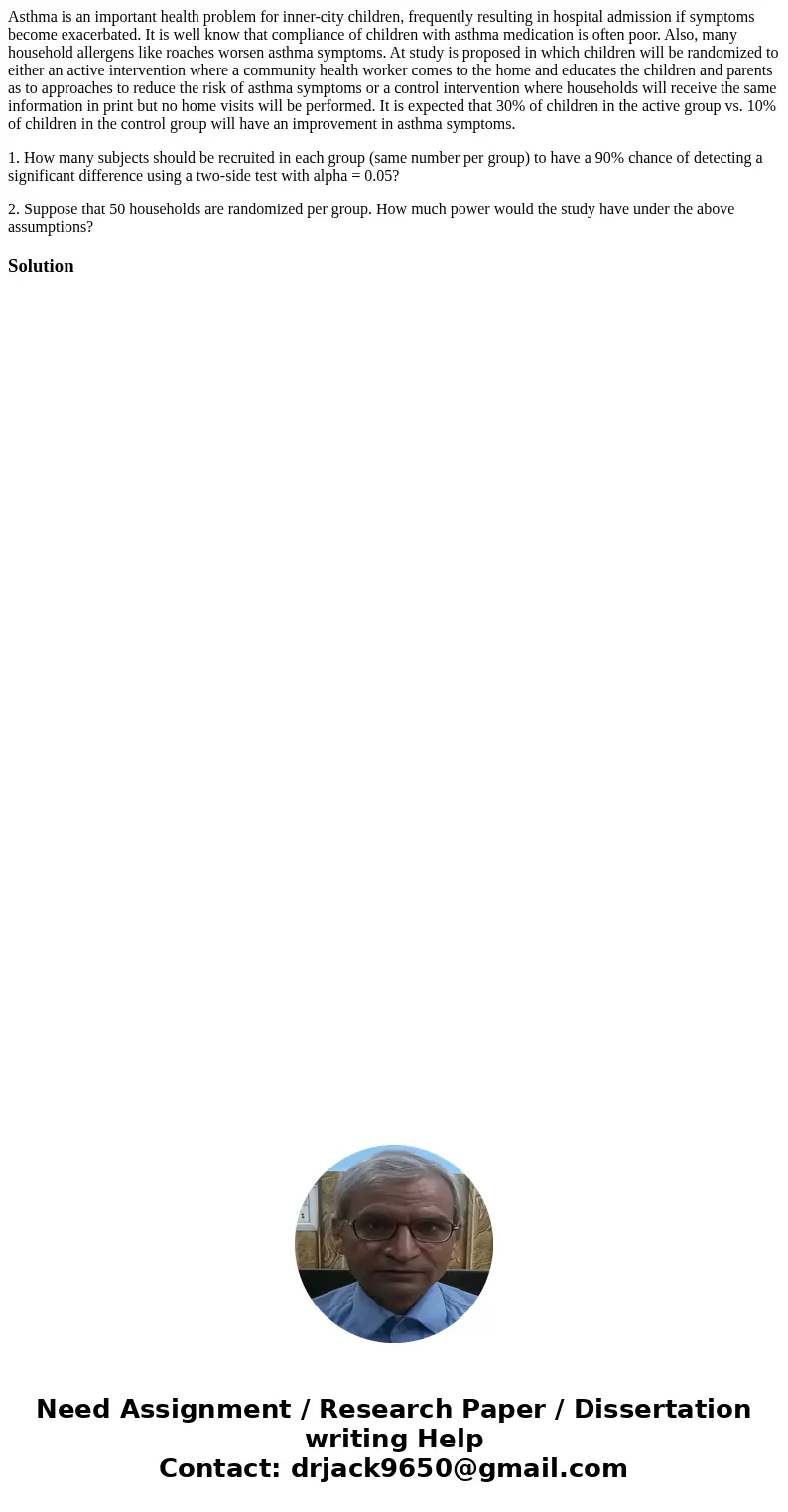Asthma is an important health problem for innercity children
Asthma is an important health problem for inner-city children, frequently resulting in hospital admission if symptoms become exacerbated. It is well know that compliance of children with asthma medication is often poor. Also, many household allergens like roaches worsen asthma symptoms. At study is proposed in which children will be randomized to either an active intervention where a community health worker comes to the home and educates the children and parents as to approaches to reduce the risk of asthma symptoms or a control intervention where households will receive the same information in print but no home visits will be performed. It is expected that 30% of children in the active group vs. 10% of children in the control group will have an improvement in asthma symptoms.
1. How many subjects should be recruited in each group (same number per group) to have a 90% chance of detecting a significant difference using a two-side test with alpha = 0.05?
2. Suppose that 50 households are randomized per group. How much power would the study have under the above assumptions?
Solution

 Homework Sourse
Homework Sourse